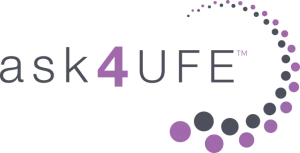Depending on the size, location, and types of your fibroids, there may be different treatment options that will work best for you. Dr. Linda Hughes, M.D., explains when a myomectomy may be the better choice.
“Fibroids are made out of smooth muscle. The uterus is a smooth muscle organ, and the myometrium of the wall of the uterus is typically where fibroids grow. In a small percentage of women, they can have what are called pedunculated fibroids that grow on a stalk. Typically, the stalk tends to be like a mushroom where it has a broad base and the fibroid is the mushroom cap. That is a safe fibroid for us to embolize, because when you cut the blood flow off, it’s going to shrink and retract into the wall of the uterus.
“In a very small percentage of women, the stalk can be thin like a lollipop. So you have a thin stalk and the top of the lollipop is actually the fibroid. In that situation, an embolization is probably not the most appropriate, because there is the potential for the thin stalk to snap off and for the fibroid to be rolling around in the belly, and can cause peritonitis and pain.
“In this day and age we have MRIs that we do on every woman prior to an embolization to assess the size, number and location of the fibroids. So, there are situations where either we’ll say it’s not appropriate for us to do the embolization, or there are situations where we’ll do the embolization in conjunction with the gynecologist, and laparoscopically they can remove that one thin pedunculated fibroid if that needs to be done.”
See Dr. Suzanne Slonim’s answer to this question.
You might also enjoy:
- Myomectomy vs. ufe
- The Facts About a Myomectomy
- What is a myomectomy? What are the challenges with a myomectomy?






